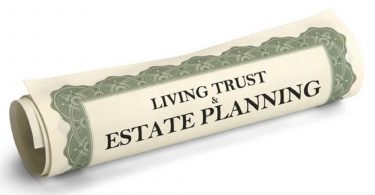Pictured: The DAR Library Interior; Washington, D.C. Photo courtesy of the National Society Daughters of the American Revolution.
The 1850 census! Family genealogy researchers breathe a sigh of relief if their early American ancestors lived long enough to be included in this first all-name enumeration. There is so much frustration with those first six censuses, listing just the head of the household, followed by nameless numbers representing the rest of the family. But you may find significant help from the National Society Daughters of the American Revolution (DAR). If you think the DAR is not relevant to your genealogical research, you are not utilizing the DAR Library, which houses a vast online database actually pertinent to millions of people tracing ancestry, whether or not they believe they descend from an American patriot.
The DAR in 2013 is definitely not your great-grandmother’s society, although it owes so much to those dedicated women who diligently copied family Bibles, recorded tombstone inscriptions, and preserved civic records. But today, DAR genealogical research resources can help family historians whose known ancestors may not even have immigrated to this country until long after General Cornwallis surrendered to General Washington at Yorktown.
Perhaps you have leafed through the old Patriot Index volumes, looking for ancestors who may have served in the Revolutionary War. Now, those books have been replaced by the ever-growing DAR Genealogical Research System (GRS), which is fully searchable for free. Much more than a listing of those who served in the American Revolution, this database includes an amazing list of generationally linked descendants, millions of whom lived well into the 20th Century. So, you can search for someone who married into one of your many immigrant lines and discover a new branch that does indeed lead back to Colonial America.
To start the ancestor search process, select the “Ancestor” tab at the top of the GRS home page. This will take you to the Ancestor Search page, where you can then access the descendancy of that newly discovered ancestor, including names, dates, and places, simply by clicking the “See Ancestor Record” icon. Additionally, for only $10, in just minutes you can download to your desktop a Record Copy of the application that includes your ancestor for even more information. You will have the sources used to compile that application, and often names of the patriot’s other children, more details about service, and additional marriages. For privacy reasons, you won’t get the first three generations on newer applications, but generally those are not the ones for which you need the most help.
Another useful free resource for genealogists at the DAR site is the Analytical Index Cards collection, created from 1910 to 1970. Next, click the initial letter to get a further division of the alphabet, and use the arrows to advance or reverse the listings. Here you will find a series of cards naming husbands and wives, plus locations, along with source titles for that couple. Sometimes you can locate these sources free online or available for ordering on microfilm from the Family History Library in Salt Lake City.
Previously, I wrote about untangling three McMillen families from New Boston, New Hampshire, using land records. (See Oh give me land, lots of land – with Genealogical Treasures!) Once I had the families sorted out, I returned to the DAR databases, which I had banged my head against for years using the old Patriot Indexes. It is important to understand that recently, genealogical proof standards have been raised significantly. When the Daughters formed their society in 1890, the information prospective members provided about their patriot could easily have concerned their grandfather’s service. Little documentation was requested or provided. But today’s standards require proof of each generation’s link to the previous one, as well as the majority of dates and locations for births, marriages, and deaths.
I had three old DAR applications, all submitted before 1910, for the “John McMillen” I knew to be my ancestor. They correctly identified his wife as Rachel Steele, but his birth and death dates were so far off, I was stymied. They indicated he had been born in 1704 and died in 1797. I had military and town records proving this man had marched from New Boston to the Siege of Rhode Island in 1778, a distance of over 100 miles. He would have been 74 years old, and then he would have been 82 at the birth of his daughter Rachel, the descendant in the old applications. After supplying land, town, military, and probate documents proving that this John McMillen was born about 1741 and died in 1835, I was able to set the record straight for my 5th-great-grandfather, and for any of his descendants who want to know their own true genealogy. Now, that information can be accessed worldwide, because DAR has uploaded their amazing database, and it grows with every new verified application.
If your early American ancestors lead you to a brickwall, try the DAR site. Older research can be indeed complicated to break through. When you find the need to hire a professional genealogist to assist you in researching your family genealogy, contact RecordClick.
The Daughters of the American Revolution (DAR) is the largest lineage society in America with about 175,000 members. In 1896 the National Society DAR established its library. It took up residence in the auditorium of DAR’s Memorial Continental Hall in 1949. Gen. Edward Pearce Casey, who also designed the interior of the Library of Congress, designed the Hall in the classical revival style of the beaux-arts in 1905. Starting with just 600 books in 1896, the DAR Library now boasts 180,000 American genealogical and historical manuscripts and publications (including 30,000 family histories/genealogies and personal letters); 300,000 files of genealogical documentation; and 15,000 volumes of unpublished genealogical records (including Bible records and cemetery transcripts).
For more information, see Genealogy Research Centers – Where Genealogists Do It in the Stacks. Also view The DAR Library videos on YouTube.
A professional genealogist and expert genealogy writer, Patricia (“Tricia”) Dingwall Thompson’s articles can be found in the New England Historic Genealogical Society magazine “American Ancestors” (Spring 2012), on Everton’s Genealogical Helper website, and serialized in the “New Hampshire Genealogical Record.” A number of her researched genealogies are housed in the Family History Library in Salt Lake City. Having taught high school Advanced Placement English for 38 years, Tricia now teaches genealogy classes through the Bozeman School District’s Adult Education program, and serves as Registrar for the Mount Hyalite Chapter of the National Society Daughters of the American Revolution.







